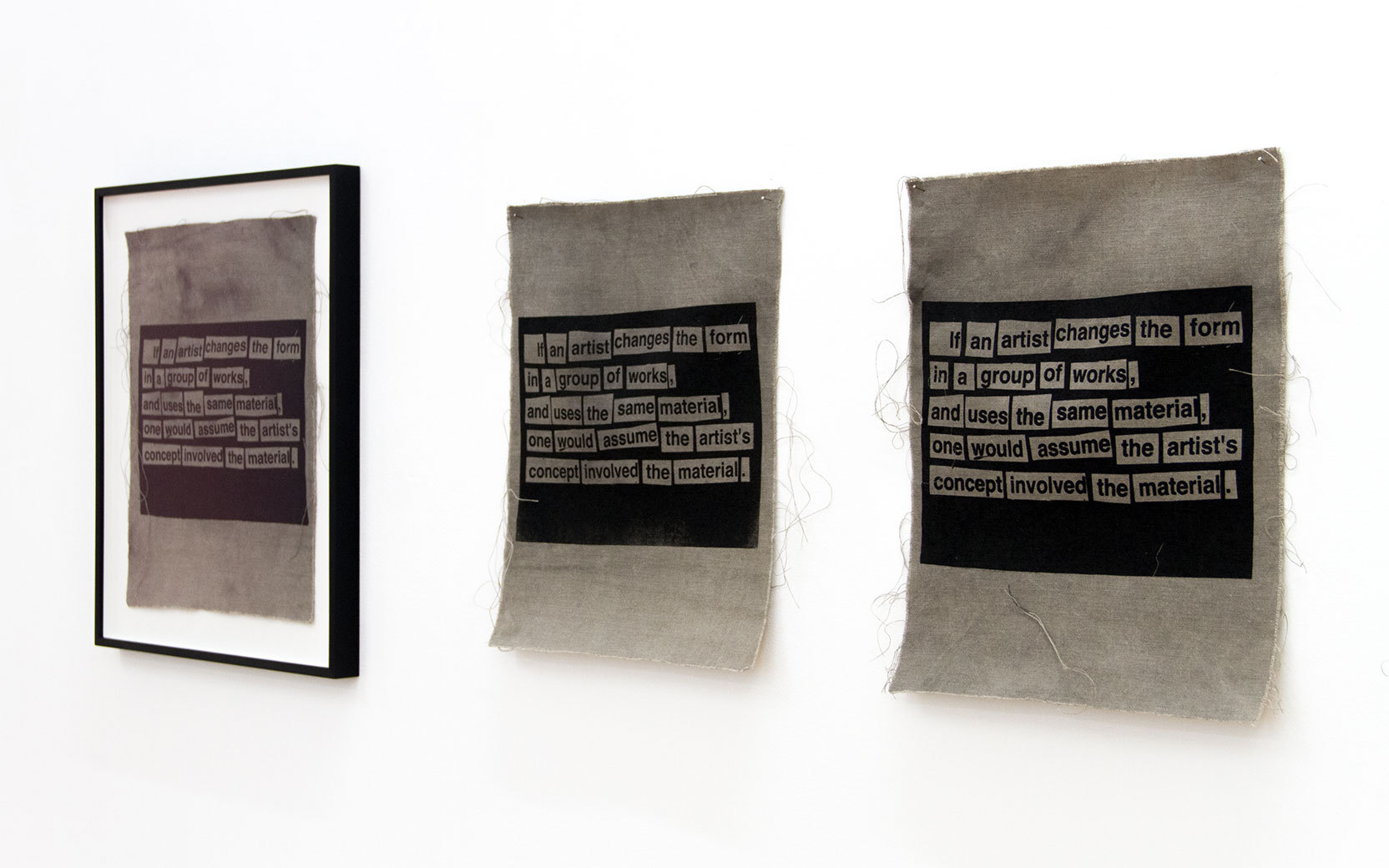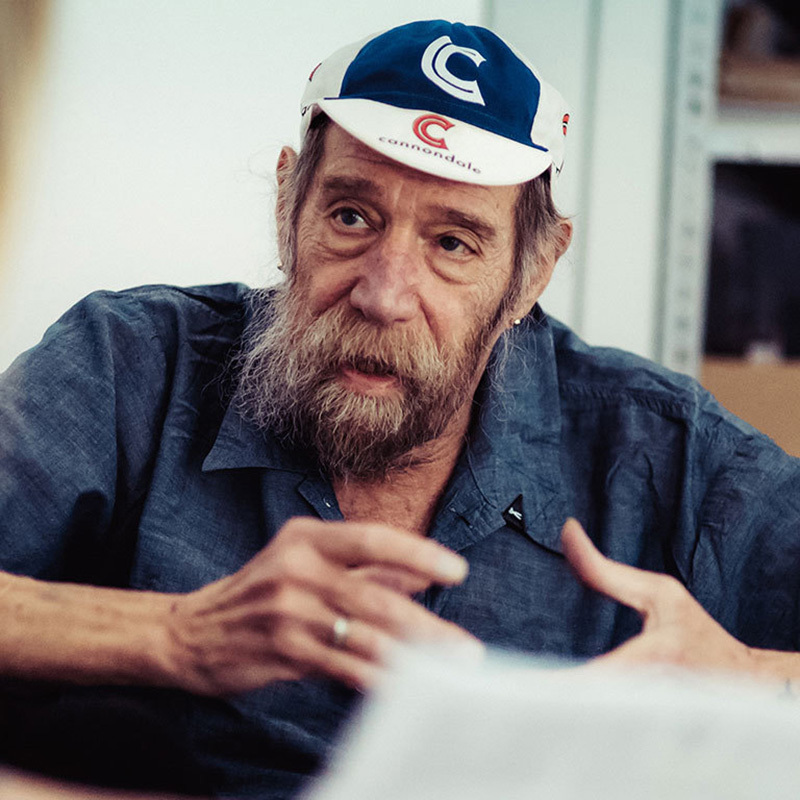An essential component in the body of work of young Danish artist Asger Dybvad Larsen (*1990 in Aarhus) is his dynamic exploration of materials that have the potential to transform the concept of painting. In his artistic universe lives the conviction that physicality is never static.
The artist defines the different components in his paintings as a set of generations, each of which are continuously affecting one another. The reuse of materials or left overs which enter the production of new works further emphasize this notion.
Reflections on the autonomy of an individual artwork often coincide with back references to conceptual themes and traditions of post-war period art, such as minimalism or abstract expressionism, and their representatives in art history.
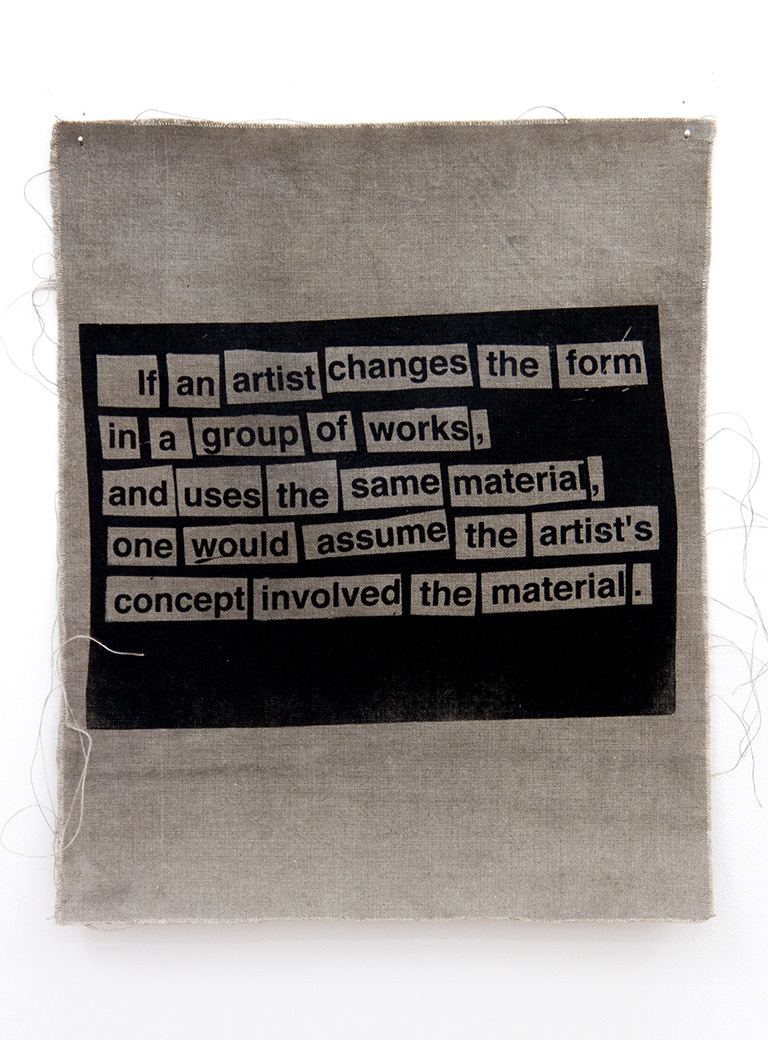
The title of the show, A Suggestion About Something Through a Shadow, with Asger Dybvad Larsen references the silk screen process where light is shed onto a light-sensitive surface.
Untitled (Cut-up 31) takes roots in a paper collage created from cutting up one of the famous Sentences on Conceptual Art by American minimal and conceptual artist Sol LeWitt.
In its original form, Sol LeWitt’s sentence concludes that, if the material differs in a number of artworks, while formally these artworks are identical, the fundamental concept of these artworks must revolve around the material aspect: “If an artist uses the same form in a group of works, and changes the material, one would assume the artist's concept involved the material.”
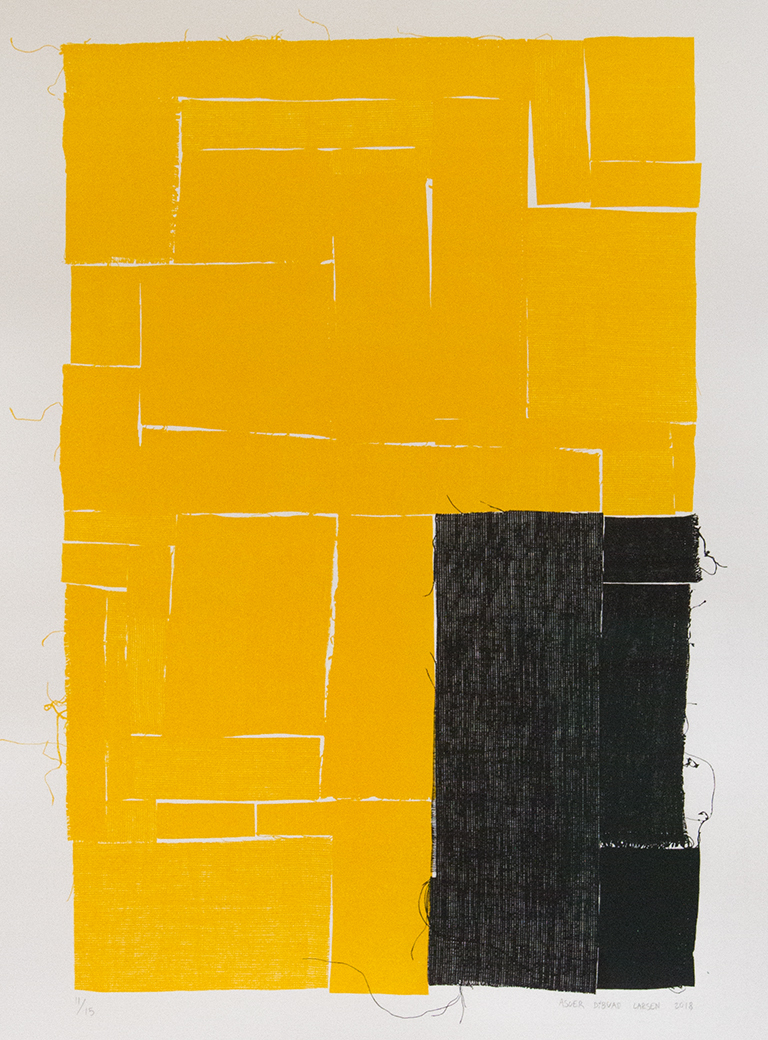
In cutting up Sol LeWitt’s sentence the artist rearranged the wording, with “form” and “material” switching position in the sentence structure. Now remodeled, the sentence concludes that, if the form is the variable in a series of works (no longer the material) the underlying concept must have nonetheless been rooted in the material.
As paradox as this altered sentence may sound at first, it is highly descriptive of Asger Dybvad Larsen’s practice as, in the artist’s view, physicality is never static.
By rearranging the wording, the artist may have factually changed the form of LeWitt’s sentence. The fact, however, that Asger Dybvad Larsen has been working with the same canvas, thread and printing ink for many years suggests that the used material cannot be completely dismissed from playing a certain role.
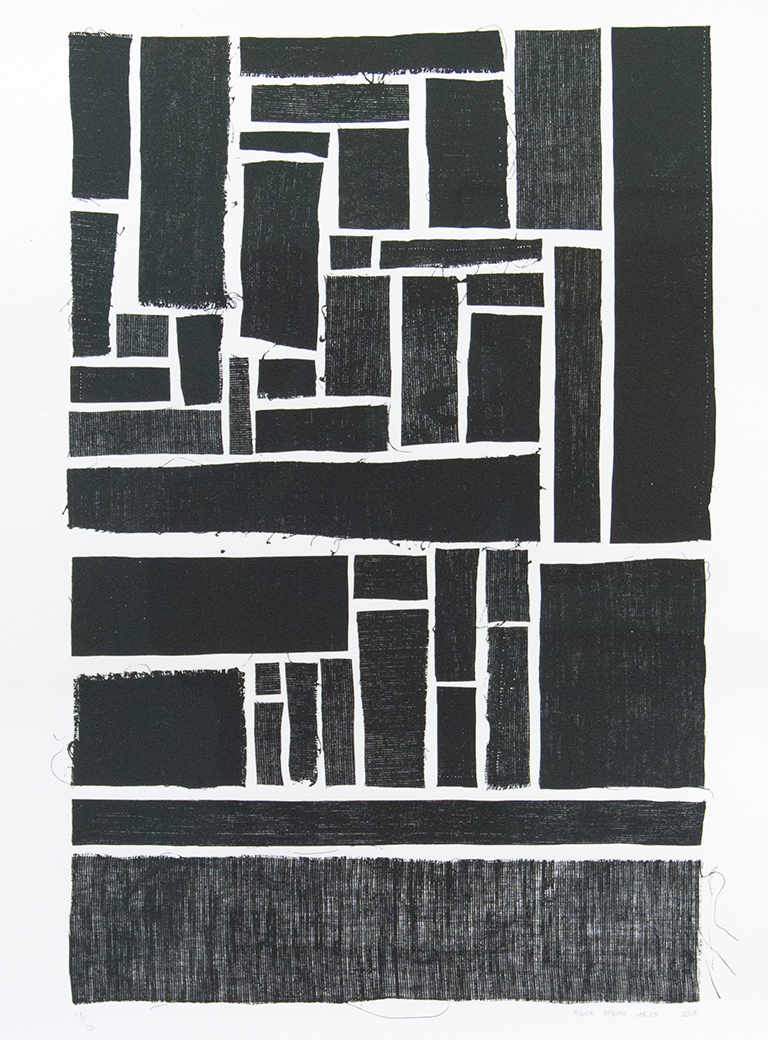
Moreover, one might argue that it must be precisely the continued use of the same material which suggests that the artist attributed a certain importance to a particular materiality – in Asger Dybvad Larsen’s case, one that is likely to be even greater than the importance of the form itself that he gives to the work of art.
This sense of materiality is only heightened by the very rough quality of the fabric, the loose threads, and occasional stains from black ink. By way of the manual silk screen process each work is a unique piece, with a look and feel of its own.
The exhibition is complemented by two larger format works by Asger Dybvad Larsen – Untitled (Black) and Untitled (Black/Yellow) – for which he arranged pieces of fabric that have left 'shadows’ on the paper backdrop from the silkscreen process.
In their totality the works on show reflect an experiment of the artist, in which he contemplates on how fabric may be transformed into paper and how, vice-versa, a paper work may be transformed into fabric.
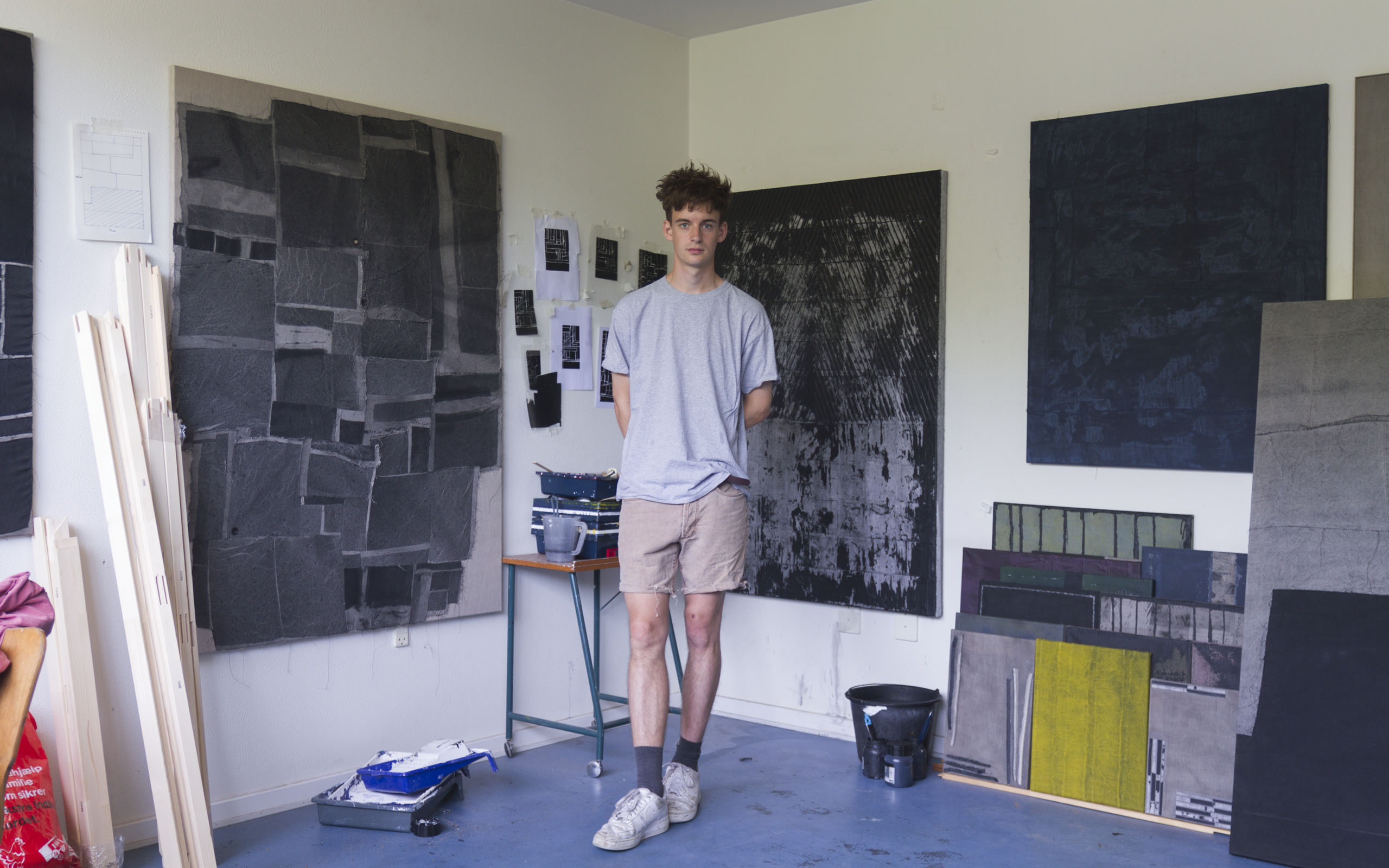
(c) Luna Lund Jensen
An essential component in the body of work of young Danish artist Asger Dybvad Larsen (*1990 in Aarhus) is his dynamic exploration of materials that have the potential to transform the concept of painting. In his artistic universe lives the conviction that physicality is never static.
The artist defines the different components in his paintings as a set of generations, each of which are continuously affecting one another. The reuse of materials or left overs which enter the production of new works further emphasize this notion.
Reflections on the autonomy of an individual artwork often coincide with back references to conceptual themes and traditions of post-war period art, such as minimalism or abstract expressionism, and their representatives in art history.
Text: Florian Langhammer
Photos: Florian Langhammer, Luna Lund Jensen (portrait)


